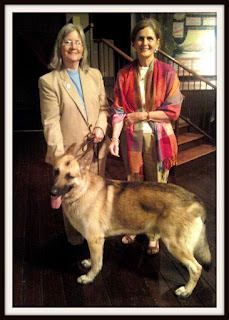When I asked face book friends to share their New Year's Resolutions for this blog, a very special friend from law school replied with these words: "I hate to share a resolution. Like a wish, [it] may not come true!" Interestingly, she is not alone. My research for this blog indicated that many people are superstitious about sharing their resolutions for fear that might jinx the outcome. Others decline to share their resolutions because they don't want anyone to know if they failed to keep them!
Isaac Werner never mentioned making a New Year's resolution in his journal, although he did mention attending a few New Years' parties. My research indicates that the tradition goes back for centuries, perhaps 4,000 years, with its roots in religion. The Babylonians are believed to have been the first, although their New Year began in mid-March when crops were planted. They promised their Gods to pay their debts and to return borrowed objects!
Another ancient God is also connected with the New Year, for January is named for the Roman God Janus. Of course, Janus is the 2-faced God that decorates doorways and arches, seeing both those coming and going. Symbolically, he could look back at the old year as well as forward into the new year.
As for Americans today, the most common New Year's Resolutions fall into certain categories:
1. Self improvement physically and mentally;
2. Advancement in career and financial circumstances;
3. Personal growth in such ways as education, organization, and time-management;
4. Interpersonal relationships through volunteering, making new friends, and improving social skills;
5. More time with family;
6. Traveling;
7. Confronting decisions, like marriage, parenthood, faith;
8. And perhaps the newest one on the list and the one most quickly broken, Spending less time on social media!
Statistics about the number of Americans who make New Year's Resolutions were not found as far back as the late 1800s when Isaac Werner was keeping his journal. But at the end of the Great Depression, it is said that only about 25% of American adults made resolutions, in contrast to the start of the current century when about 40% did. Some believe that number has grown to 50% today. Studies have shown that actually making a resolution to achieve the typical "Self improvement" goals, like more healthful eating, weight loss, exercise, and quitting smoking, will make you 10-times more likely to succeed than those who only want to do those things, without an actual resolution.
So, for those of you who decline to share your resolution because it might not happen, only you will know whether you succeeded or failed. However, according to one survey for those of you who share your resolution with others and don't quite succeed, here are four great excuses that one survey found: 35% said they had set unrealistic goals for themselves; 33% said they didn't keep track of their progress; 23% said they forgot about what they had resolved to do; and about 1 in 10 respondents to the survey said they made too many resolutions!
I'm only planning two resolutions for 2018. I'm following my friend's example and keeping one resolution to myself! However, the following resolution I'm willing to share: "Make more time to read books by authors whose work I respect and learn to put books down when an author disappoints me!...although I may have to modify that commitment by making myself more careful about what I choose to read, since I seem to struggle with abandoning a book unfinished!!" See, I've even built an excuse into my resolution in case I fail at laying a disappointing book aside!

















































